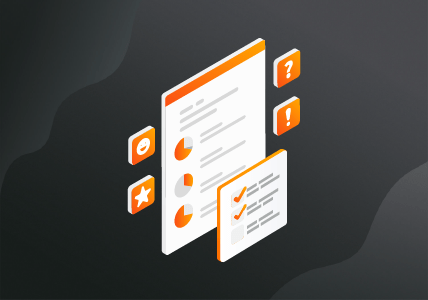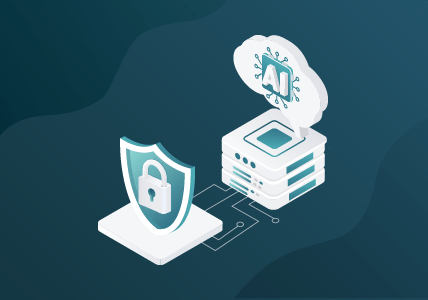How AI Can Assist in Network Monitoring
As networks evolve across multi-cloud environments, so does the risk of security threats and performance concerns. Organizations often find themselves bogged down in overwhelming amounts of data that obscure threats, overwhelm networks, and result in a poor experience for employees and customers alike.
Fortunately, there’s a solution: AI network monitoring. AI network security and monitoring can sort through massive amounts of data to identify threats, predict issues, and optimize workloads more quickly and accurately. With AI as the first line of defense, IT teams can focus on the issues that truly matter and ignore the rest.
Interested in learning more about AI and network monitoring? Read on to learn all about it, including its key benefits, capabilities, use cases, and more.
- What Is AI Network Monitoring?
- Key Benefits of AI for Network Monitoring
- AI for Network Security and Monitoring
- AI Network Monitoring Tools and Capabilities
- Use Cases and Industry Applications
- Challenges and Considerations
- How Gigamon Enables AI-Based Network Monitoring
- Unlock the Potential of AI for Network Monitoring
Key Takeaways
- AI network monitoring provides a more adaptable and accurate alternative to rule-based and legacy-based monitoring systems
- These tools provide real-time anomaly detection, reduced false positives, and dynamic traffic allocation
- AI helps both IT operations (NetOps) and security teams (SecOps) operate more efficiently
- Both training data quality and AI trustability are concerns when it comes to AI network monitoring and security, but Gigamon solves these concerns by providing high-quality data and human oversight
What Is AI Network Monitoring?
AI network monitoring leverages machine learning, pattern recognition, and behavioral analysis to monitor network traffic, identify suspicious behavior, optimize workload, and more. Compared to rule-based or legacy-based network monitoring systems, AI network monitoring is more adaptable. Thanks to AI, these network monitoring can learn from experiences for greater accuracy over time. It enables faster detection, diagnosis, and resolution of problems.
Key Benefits of AI for Network Monitoring
AI for network monitoring delivers a range of benefits to organizations that aren’t available via other network monitoring technologies. They include:
- Real-time anomaly detection: Whereas other network monitoring systems rely on in-depth rules to detect anomalies, AI doesn’t. It detects deviations in traffic or behavior patterns without predefined rules, meaning it will identify threats that others may miss.
- Accelerated learning: Artificial intelligence presents the opportunity to accelerate the learning process of a security analysis and bypass months of onboarding efforts. Using AI as an on-the-go learning tool facilitates a more efficient learning process and can save organizations time and money.
- Reduced false positives: AI works off a learning model. That means, as time goes on, the accuracy of AI network monitoring improves. This network technology results in fewer false positives and reduced noise.
- Proactive performance management: AI network monitoring also uses predictive analytics to forecast issues before they impact users or services. AI network monitoring can predict imminent hardware failure or traffic bottlenecks before they happen, for less downtime and quicker resolution.
- Dynamic traffic allocation: AI can automatically allocate traffic according to network capacity to increase efficiency and reduce network congestion.
AI for Network Security and Monitoring
AI network security monitoring isn’t just for managing workload and identifying hardware concerns. It excels at security monitoring, too. AI network security is particularly effective at detecting threats like lateral movement or DDoS attacks, which are commonly missed by signature-based systems.
AI for network security also excels at incident response. AI can sort through high volumes of security alerts and determine which threats to prioritize. This empowers network security teams to focus on threats that matter, without getting bogged down in threats that don’t matter. It can also correlate security threats to one another to quickly paint a clear picture of network attacks.
In addition to identifying and correlating concerns, AI network security also plays a role in addressing threats. AI can independently take action, whether that may be blocking phishing attempts, diverting traffic from affected systems, or applying a fix.
AI Network Monitoring Tools and Capabilities
AI network monitoring uses machine learning to predict issues and detect threats and unusual network behavior in real time. Their key features include:
- Anomaly detection: AI detects anomalies by developing an in-depth understanding of baseline network behavior, then flags behavior that falls beyond the baseline.
- Predictive analytics: AI network monitoring isn’t just adept at detecting issues as they strike but can also predict them before damage can occur. AI can anticipate bottlenecks and proactively redirect traffic accordingly.
- Automated root cause analysis: Another key feature of AI network monitoring is its ability to identify the root cause of issues much more quickly than humanly possible. AI can sort through massive amounts of data in an instant, reducing the time it takes to identify causes and adapt accordingly.
- Intelligent alerting: All network monitoring is capable of alerting to potential threats, but rule-based and legacy-based systems tend to result in false and repetitive alerts, inadvertently obscuring actual threats. AI network monitoring sorts through noise and prioritizes alerts according to their severity, so the most important concerns can be addressed first.
Use Cases and Industry Applications
AI network monitoring supports the work of both IT operations (NetOps) and security teams (SecOps) in a range of different applications:
- Remote workforce monitoring: AI network monitoring enhances both security and experience for remote workforces. AI can identify potentially threatening access to the network from any remote location and easily resolve network issues related to remote access.
- Cloud infrastructure visibility: These technologies provide network visibility and protection across organizations’ complete cloud infrastructure, creating a single view of all traffic at once.
- IoT traffic oversight: The constant flow of data from IoT traffic can clog up network tools and create a significant amount of noise. AI network monitoring uses machine learning to easily sort through this vast amount of information to identify anomalies and predict issues that may otherwise remain hidden.
Challenges and Considerations
As with any technology, AI-based network monitoring presents a few challenges and considerations:
- Training data quality: The data quality used in training has a significant impact on its accuracy. If the AI is trained on inaccurate data or unbalanced data, it can result in an improperly functioning system.
- Trustability: Much of AI is yet to be understood. If it’s unclear how AI works, some may find it difficult to trust its decision-making. This concern is compounded when AI is making decisions that directly impact network security.
Concerns like these make human-in-the-loop oversight ever more critical. Responsible AI usage calls for AI that’s always overseen by humans when it comes to important decisions. AI network security and monitoring should be used to flag concerns, but humans should make the final decisions on them.
How Gigamon Enables AI-Based Network Monitoring
Gigamon trains AI-based network monitoring on rich, context-aware data for optimal results. Its high-fidelity data and traffic insights empower AI to precisely detect anomalies, uncover subtle or hidden patterns, and reduce false positives. By providing a reliable foundation, Gigamon ensures an ideal outcome.
At the heart of the Gigamon Deep Observability Pipeline is a Visibility and Analytics Fabric that manages and filters traffic before it reaches AI. Only relevant traffic is passed on to AI network security monitoring, ensuring AI focuses on what matters most without being slowed by irrelevant data.
To top it off, Gigamon, as a Deep Observability Pipeline, integrates with leading AI-based security and observability platforms to deliver deep observability and unified insights.
Unlock the Potential of AI for Network Monitoring
Transform your network performance and security by adopting AI-based network monitoring from Gigamon. Our leading network visibility and security platform enables intelligent, efficient, and secure network visibility built to support a Zero Trust architecture. Ensure optimal performance and protection across hybrid cloud environments with deep observability and real-time threat detection.
Ready to get started? Learn more about how AI is reshaping hybrid cloud security and contact a Gigamon expert to schedule a demo today.

CONTINUE THE DISCUSSION
People are talking about this in the Gigamon Community’s AI Exchange group.
Share your thoughts today








 Dan Daniels
Dan Daniels